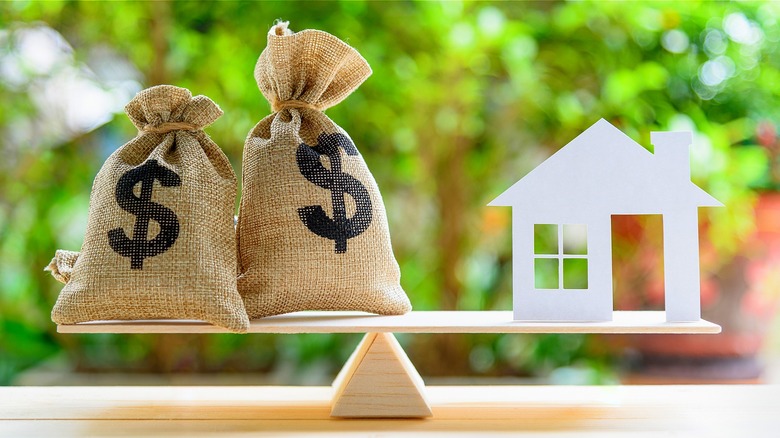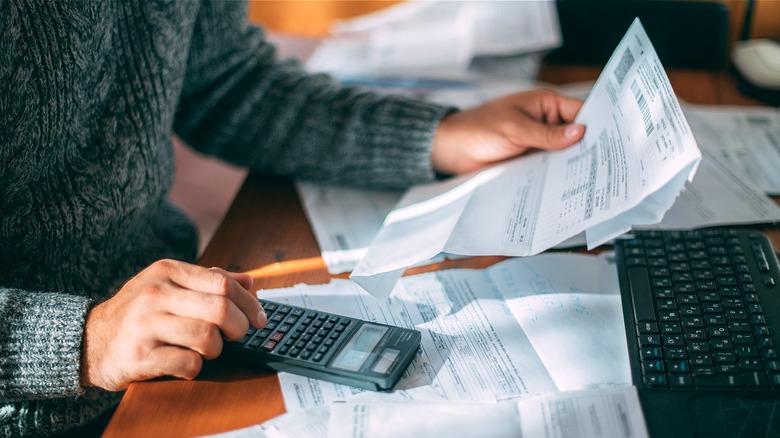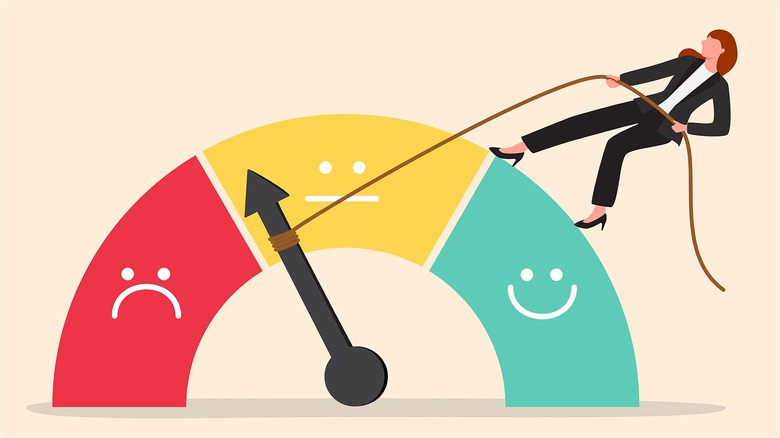One Simple Way To Tell The Difference Between Good Debt And Bad Debt
As household debt in America continues to rise ($17.5 trillion in the fourth quarter of 2023, per the Federal Reserve Bank of New York, an increase of $212 billion over the quarter), you may wonder if there's such a thing as good debt. In general, the answer is "yes," and most people will have a mix of good and bad debt. If you own a home and have a mortgage, for example, that would be considered good debt, while a credit card balance you carry each month would fall under the bad category.
How do you decide what's good and what's bad when it comes to debt? There's a simple way to tell: Good debt helps build your wealth and increases in value over time, whereas bad debt is used to buy things that will depreciate. This said, there is a debate over whether good debt actually exists, given that good debt, like, say, a mortgage, can switch over to the bad side under certain circumstances.
With regard to this personal finance discussion, we asked Jason Tartick, a bestselling author, finance expert, and podcast host, for his take, specifically when it comes to families and the idea of taking on this kind of debt. Tartick says it's worth it, so long as the debt incurred meets the condition of "using debt to build on appreciating assets."
Examples of good debt
In explaining good debt for consumers, Jason Tartick compared it to a corporation that takes on a debt in order to grow. For example, a company that uses debt to acquire other companies, real estate, or other assets; these assets will help the business to expand and, ultimately, become more valuable. Similarly, for families, a mortgage is a debt incurred to buy a home, a home that will hopefully be worth more once the loan is paid off than it was at its start. Of course, this doesn't always happen, especially if you buy when housing prices are at an all-time high.
Taking on more mortgage than you can afford for 15 or 30 years is one way to turn this good debt into a risky one. The S&P CoreLogic Case-Shiller home prices index found that home prices in the index's 20 major U.S. metropolitan markets were up 7.3% year-over-year for February 2024. This represented an all-time high and was up 0.7% from the previous month. Depending on how you're able to finance your home, purchasing when home prices are this high could mean your good debt isn't as good as you would hope, which is where the debate comes in.
Another example of good debt would be student loans, as an investment in education often means better opportunities. The Bureau of Labor Statistics found that as educational attainment rises, so too does pay, while the unemployment rate lowers. This said, student loans, despite their low-interest rates, could turn bad if the borrower fails to pay it back according to the loan's terms.
Mixing good and bad debt
So the way to tell if a debt is good or bad is to look at what the debt buys: If it buys something that will appreciate over time, then it's good; if it buys something that will lose its value or not add any to your wealth, then it's bad. Said Jason Tartick about credit cards, a classic example of potential "bad debt," "We know [...] the majority of things that we buy on credit cards do not lead to appreciating assets. The interest of those are extremely high because it's high-risk." Of course, that risk factor is what can turn a good debt into a bad one, too, as discussed.
Also, if paid off responsibly each month, using a credit card can be good for your credit score. The credit bureaus like to see a mix of debt, including installment credit, like a mortgage or car loan, and revolving credit, like a credit card. Your credit score will increase as you prove you can responsibly manage your debt by making on-time payments and keeping your credit utilization low. So, when it comes to defining good debt versus bad debt, think about it in terms of appreciating assets, and also keep in mind the ways debt can change from good to bad (and vice versa). (Here are the 10 easiest ways to raise your credit score.)


